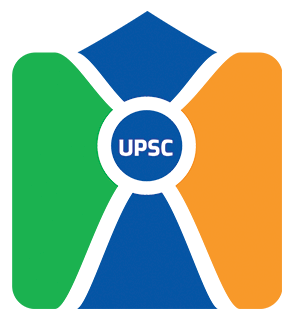UPSC Chemistry Syllabus: The UPSC Notification officially releases the UPSC Chemistry Optional Syllabus. Applicants who select chemistry as an elective should carefully review the syllabus to ensure they fully understand the subjects they will need to study.
The comprehensive subjects and subtopics from which exam questions are created are outlined in this UPSC Chemistry Syllabus. Given the high level of specialization in the Chemistry Optional UPSC Syllabus, it is advised that only candidates possessing a keen interest and comprehension select Chemistry as their optional subject for the UPSC Mains Exam.
UPSC Chemistry Syllabus Overview
Below we have provided an overview table for the UPSC Chemistry syllabus. Students can go through the table to get an idea of the basic topics asked in the UPSC examinations.
|
UPSC Chemistry Syllabus Overview |
|
| Subject Area | Topics |
| Physical Chemistry | Basic Concepts in Chemistry, Equilibrium, Electrochemistry, Chemical Kinetics, Surface Chemistry |
| Inorganic Chemistry | Periodic Table, Coordination Compounds, Main Group Elements, Transition Metals, Lanthanides and Actinides |
| Organic Chemistry | Basics of Organic Chemistry, Hydrocarbons, Organic Compounds with Functional Groups, Polymers, Biomolecules, Environmental Chemistry |
| Analytical Chemistry | Basics of Analytical Methods, Instrumental Methods |
| Applied Chemistry | Principles and Applications of Spectroscopy, Chemicals in Everyday Life |
UPSC Chemistry Syllabus
Atomic structure, chemical bonding, solid state, gaseous state, thermodynamics and statistical thermodynamics, phase equilibria and solutions, electrochemistry, chemical kinetics, photochemistry, surface phenomena, and more are all included in the Official UPSC Chemistry Syllabus. Let’s examine the comprehensive Chemistry Optional UPSC Syllabus for Papers 1 and 2 in the section below.
UPSC Chemistry Syllabus for Paper 1
Below is the detailed Chemistry Syllabus for UPSC Paper 1. Students are advised to go through the syllabus carefully –
Atomic Structure
The uncertainty principle of Heisenberg Time-independent Schrodinger wave equation; wave function interpretation; one-dimensional particle in a box; quantum numbers; wave functions of hydrogen atoms; orbitals’ shapes in s, p, and d.
Chemical bonding
Ionic bonds, ionic compound properties, lattice energy, and the Born-Haber cycle; covalent bonds and their general properties; molecular bond polarities and their dipole moments; theory of valence bonds, resonance, and resonance energy concepts; bonding H2 +, H2 He2 to Ne2, NO, CO, HF, CN–, and molecular orbital theory (LCAO technique) Bond order, bond strength, bond length, and valence bond and molecular orbital theories are compared.
Solid State
crystal systems; unit cell, lattice structure, and crystal face designations; Bragg’s Law crystal diffraction of X-rays; close packing, the computation of some limiting radius ratio values, and radius ratio criteria; structures of ZnS, CsCl, CaF2, and NaCl; semiconductors, impurity defects, and stoichiometric and nonstoichiometric defects.
Gaseous State and Transport Phenomenon
Maxwell’s distribution of speeds, intermolecular collisions, collisions on the wall, and effusion; equation of state for actual gases, intermolecular interactions, critical phenomena, and liquefaction of gases; The ideal gases’ viscosity and thermal conductivity.
Liquid State
Kelvin equation: Surface tension and surface energy, wetting and contact angle, interfacial tension and capillary action.
Thermodynamics
The second law of thermodynamics; free energy functions; entropy as a state function; entropy changes in different processes; entropy-reversibility and irreversibility; Thermodynamic state equation Maxwell connections; dependence of U, H, A, G, Cp, and Cv on temperature, volume, and pressure; J-T effect and inversion temperature; equilibrium criteria; relationship between thermodynamic quantities and equilibrium constant; An overview of the third law of thermodynamics is provided by the Nernst heat theorem.
Phase Equilibria and Solutions
Clausius-Clapeyron equation; pure substance phase diagram; binary system phase equilibria; partially miscible liquids—upper and lower critical solution temperatures; partial molar quantities, their identification, and importance; excess thermodynamic functions and their interpretation.
Electrochemistry
Debye-Huckel limiting law and theory of strong electrolytes for different equilibrium and transport parameters.
Electrochemical series, fuel cells, batteries, galvanic cells, concentration cells, and cell e.m.f. measurement.
Amperometry, ion-selective electrodes and their applications, double layer at the interface, rate of charge transfer, current density, and overpotential are examples of electroanalytical processes.
Chemical Kinetics
rate equations for fractional, first, second, and zeroth order reactions that are both integral and differential; rate equations for chain, sequential, parallel, and reverse reactions; Branching chain and explosions; effect of temperature and pressure on rate constant. Investigation of quick reactions using relaxation and stop-flow techniques. Transition state theories and collisions.
Bioinorganic Chemistry
The function of metal ions in biological systems, including their role in cytochromes, ferredoxins, oxygen-uptake proteins, and ion transport across membranes (molecular mechanism).
Coordination Chemistry
Bonding during a metal complex’s transition. Electronic spectra of metal complexes, valence bond theory, and crystal field theory and their adaptations are examples of theories used to explain magnetism.
Coordination compound stereochemistry, IUPAC nomenclature, chelate effect and polynuclear complexes, trans effect, and its theories, kinetics of substitution reactions in square-planar complexes, and thermodynamic and kinetic stability of complexes are among the topics covered.
Main Group Chemistry
Boranes, borazines, phosphazenes and cyclic phosphazene, silicates, and silicones, Interhalogen compounds; Sulphur—sulfur-nitrogen compounds, and noble gas compounds.
UPSC Chemistry Syllabus for Paper 2
Below is the detailed Chemistry Syllabus for UPSC Paper 2.
Delocalized Covalent Bonding
Aromaticity, anti-aromaticity; annulenes, azulenes, tropolones, fulvenes, and sydnones.
Reaction mechanisms
Isometropies, method cross-over experiments, intermediate trapping, stereochemistry, energy of activation, thermodynamic control, and kinetic control of reactions are general approaches (both kinetic and non-kinetic) to studying mechanisms or organic reactions.
Reactive intermediates
Generation, geometry, stability, and reactions of carbonium ions and carbanions, free radicals, carbenes, benzynes, and nitrenes.
Reactions and Rearrangement
Wagner—Meerwein rearrangements; Hoffmann, Beckmann, Baeyer-Villiger, Favorskii, Fries, Claisen, Cope, Stevens, and Pinacol-pinacolone.
Aldol, benzoin, and acyloin condensations; Fischer indole synthesis, Skraup synthesis, Bischler-Napieralski, Sandmeyer, Reimer-Tiemann, and Reformatsky reactions; Aldol condensation, Claisen condensation, Dieckmann, Perkin, Knoevenagel, Witting, Clemmensen, Wolff-Kishner, Cannizzaro, and von Richter reactions.
Preparation and Properties of Polymers
Polyethylene, polystyrene, polyvinyl chloride, Teflon, nylon, terylene, and both synthetic and natural rubber are examples of organic polymers.
Biopolymers are made up of DNA, RNA, and proteins.
Photochemistry
Photochemical reactions of simple organic compounds, excited and ground states, singlet and triplet states, Norrish-Type I and Type II reactions.
UPSC Chemistry Exam Pattern 2024
Two optional papers are included in the total of nine papers that make up the UPSC Mains Exam. Applicants who select Chemistry as an elective must show up for the 250-mark Optional Papers 1 and 2. For further information, see the UPSC Chemistry Optional Exam Pattern below.
|
UPSC Chemistry Exam Pattern 2024 |
||
| Mains Papers | Subject | Marks |
| Paper VI | UPSC Chemistry Optional Paper-I | 250 |
| Paper VII | UPSC Chemistry Optional Paper-II | 250 |
| Total | 500 | |
| Time duration | 3 hours (180 minutes) | |
Steps to Prepare for UPSC Chemistry Syllabus
Candidates who plan to take the exam should begin preparing as soon as possible because they need to finish the revision in addition to covering the entire UPSC Chemistry optional syllabus. Making a successful study schedule will assist them in doing the same. Here are some helpful hints to assist cover the UPSC Chemistry Optional Syllabus to get a good UPSC result: –
- Understanding the paper’s syllabus should be the first step in any preparation. For preparation, candidates can review the whole UPSC Chemistry Syllabus. As physical and inorganic chemistry make up the majority of the topics, candidates are encouraged to thoroughly prepare them beforehand.
- The fundamentals of the subjects must be covered by applicants before going deeper into the subject matter. To learn the fundamentals, candidates might study the NCERT textbooks for classes 11 and 12.
- To help retain the information, mnemonics, data charts, and diagrams might be used. Candidates can benefit from using mnemonic devices to help them recall the periodic table.
- In the inorganic section, there will be numerical problems that candidates must be able to solve using all of their newly acquired knowledge. They will learn which principle is applied whereby answering as many questions as they can, which will help them solve the numerical accurately.
UPSC Chemistry Syllabus Important Books
The following list of books can be used by candidates to help them prepare for the UPSC Chemistry Syllabus:
|
UPSC Chemistry Syllabus Important Books |
||
| Subject | Books | Author/ Publication |
| Chemistry | Principles of Physical Chemistry | Puri, Sharma & Pathwa |
| Chemical Periodicity, Chemical bonding, Coordination compound | Maden, Malik and Tuli | |
| Advanced Inorganic Chemistry | J.D. Lee | |
| Bonding and shape of organic molecules, Stereochemistry of carbon compound – Reactions and reagents | O.P. Agarwal | |
| A Text-Book of Organic Chemistry | Bahl & Bahl | |





